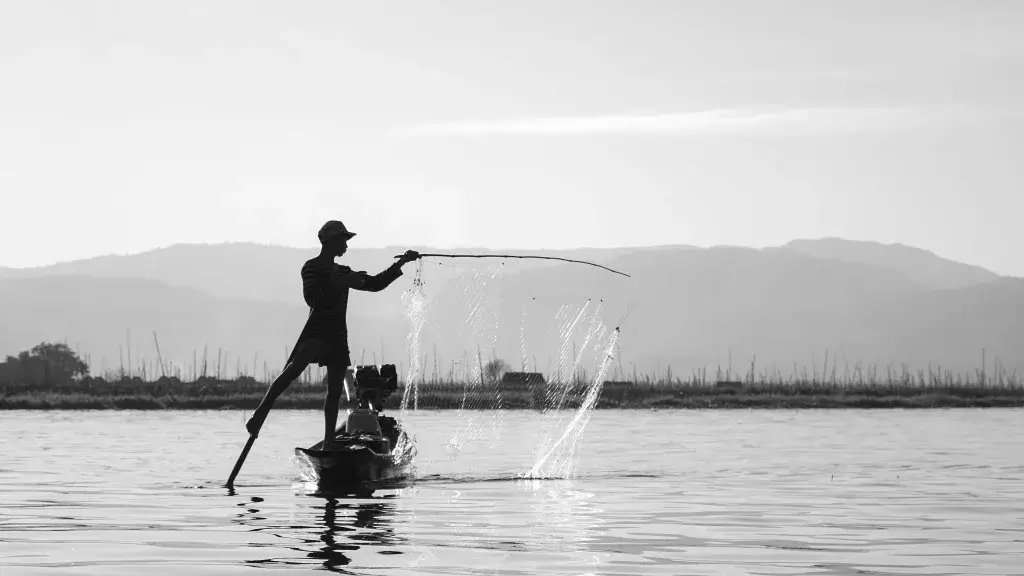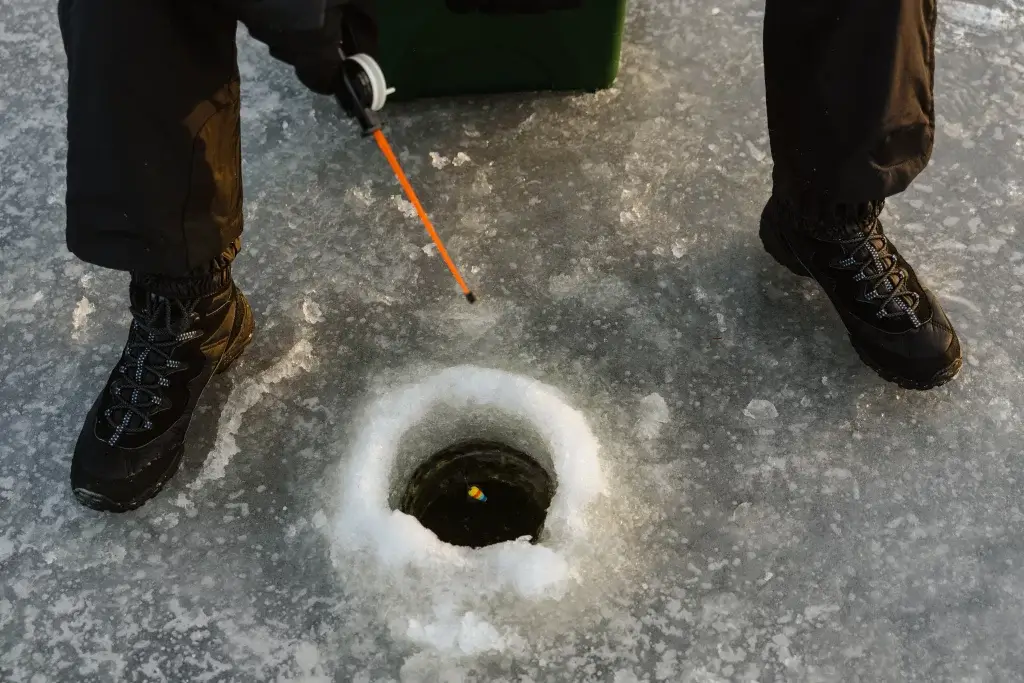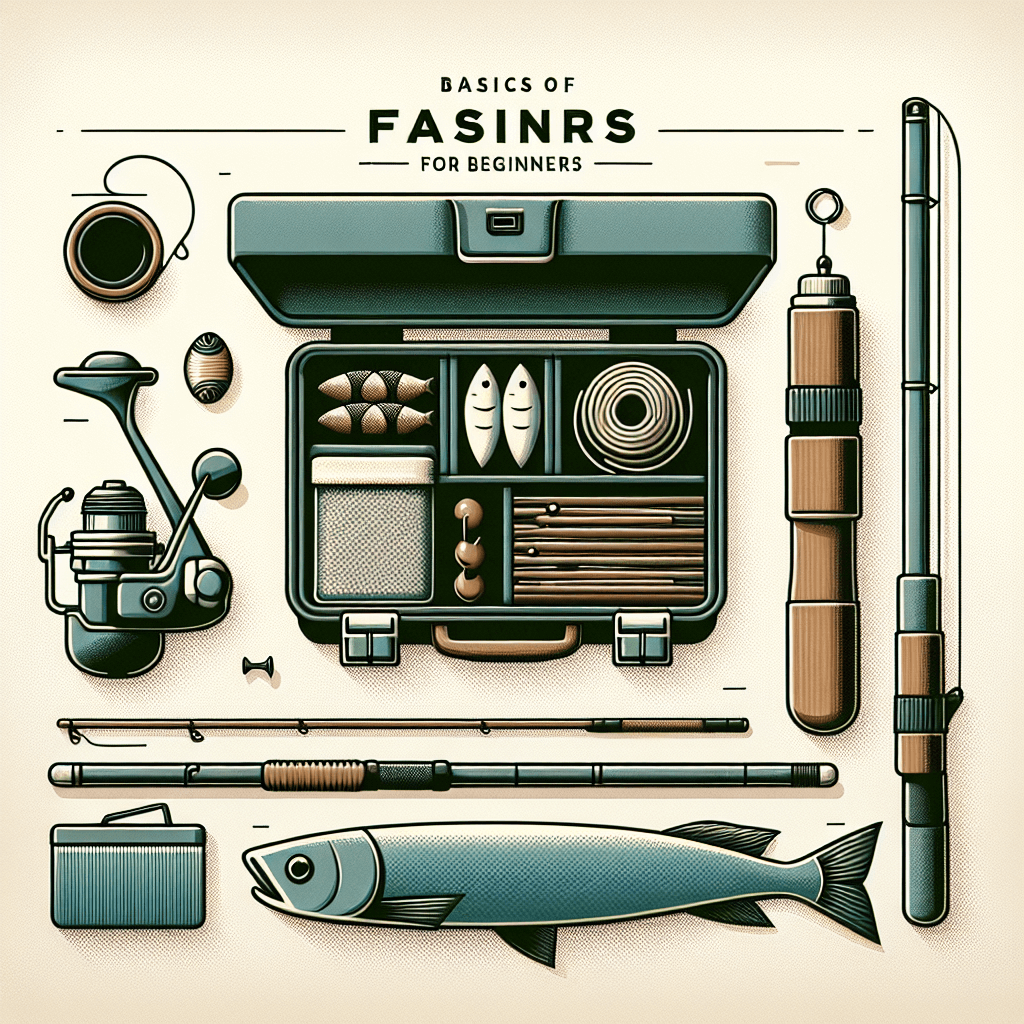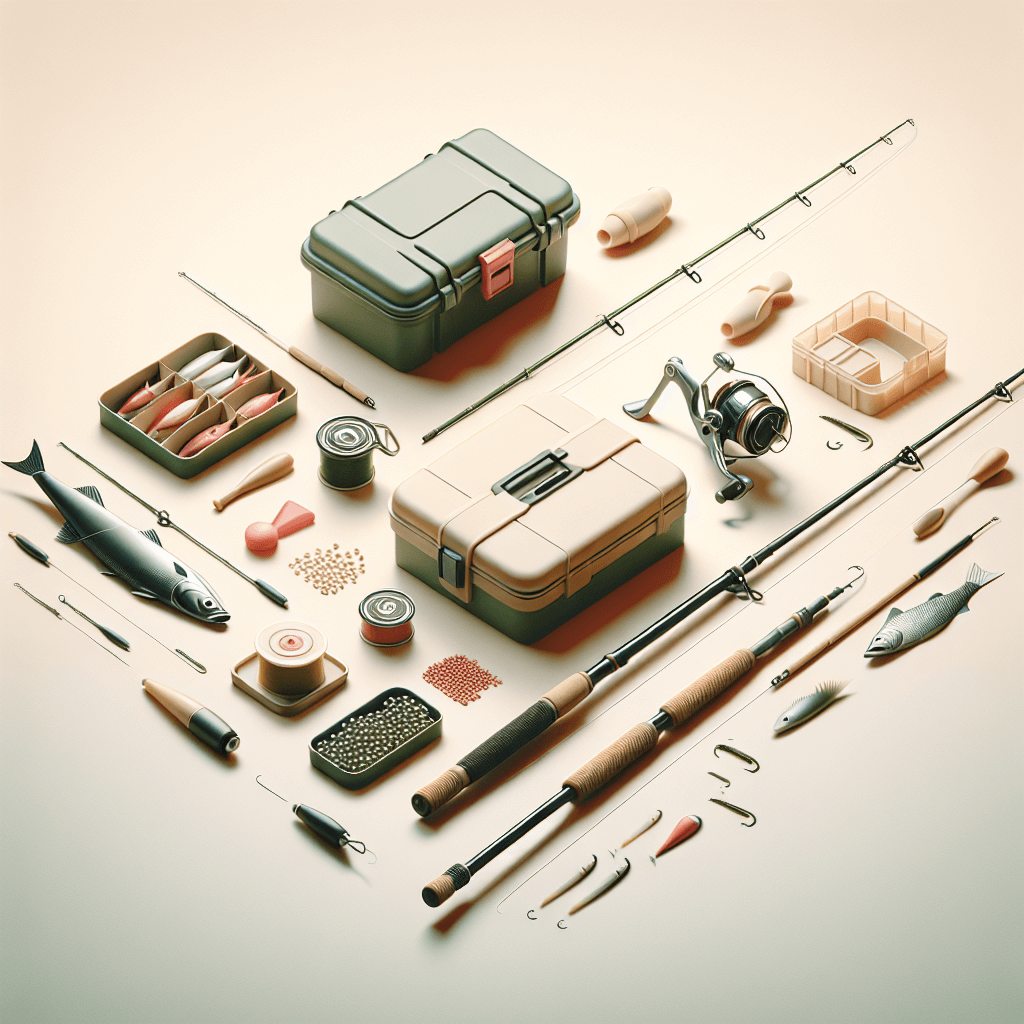Beginner’s Best Fishing Guide
So, you’ve decided to embark on a fishing adventure, huh? Well, before you trade your shoes for fishing boots and start reeling in the big ones, there are a few essential items you’ll need to make your beginner fishing experience a success. From rods to bait, tackle boxes to sunscreen, this fishing guide has got you covered. Don’t worry, we won’t leave you feeling like a fish out of water – pun intended! So grab your sense of humor, your fishing hat, and let’s get ready to catch some laughs… I mean, fish!

Fishing Rod and Reel
Rod Length and Action
When it comes to choosing the perfect fishing rod, there are a few things to consider. The length of the rod plays a significant role in your fishing experience. A longer rod allows you to cast your line farther, making it easier to reach those elusive fish. However, if you’re fishing in tight spaces or smaller bodies of water, a shorter rod might be a better choice.
The rod’s action refers to the flexibility of the rod. Fast action rods are stiffer and more sensitive, which is ideal for fishing in heavy cover or when you need to set the hook quickly. On the other hand, slow action rods are more flexible and forgiving, making them perfect for beginners or when targeting smaller fish. Choose the rod length and action that suits your fishing style and the type of fish you’re targeting.
Reel Type
Now, let’s talk about the reel. There are two main types of reels: spinning reels and baitcasting reels. Spinning reels are commonly used by beginners due to their ease of use. They are versatile and more forgiving when it comes to line tangles or backlash. Baitcasting reels, on the other hand, offer more control and precision. They are favored by experienced anglers who excel in casting accuracy and want to target larger fish.
When choosing a reel, consider the size and weight. Match the reel size to the fishing rod’s specifications for optimal performance. The reel should feel comfortable in your hand and be easy to operate. Keep in mind that practice makes perfect when it comes to mastering the art of casting with a baitcasting reel, so don’t get discouraged if you have a few tangled knots in the beginning.
Fishing Line
Ah, the fishing line – an essential piece of gear that connects you to the fish. There are various types of fishing lines available, including monofilament, fluorocarbon, and braided lines. Monofilament lines are popular among beginners due to their affordability and versatility. They are less visible underwater and have good knot-tying capabilities.
Fluorocarbon lines, on the other hand, are known for their excellent invisibility underwater and abrasion resistance. They are a popular choice for finesse fishing or when targeting spooky fish species. Braided lines are incredibly strong and have a small diameter for their strength. They are excellent for heavy cover or when you need to wrench fish out of thick vegetation.
Choose a line that suits the fishing conditions and target species. Keep in mind that different lines have different strengths and weaknesses, so don’t be afraid to experiment and find the one that works best for you.
Fishing Hooks
Different Types of Fishing Hooks
When it comes to fishing hooks, there are a plethora of options available. From the classic J-hooks to circle hooks, each hook design serves a specific purpose. J-hooks are the most common and versatile option, suitable for a wide range of fishing applications. Circle hooks, on the other hand, have gained popularity among anglers practicing catch-and-release fishing. They are designed to hook the fish in the corner of the mouth, reducing the chance of deep hooking and potential harm to the fish.
Other hook types include treble hooks, which are commonly used on lures, and octopus hooks that are great for live bait fishing. Each hook type has its own unique advantages, so it’s essential to understand their differences and choose the appropriate hook for your fishing needs.
Sizes and Shapes
Hooks come in various shapes and sizes, each designed to accommodate different bait or target species. Hook sizes are denoted by numbers, with smaller numbers representing larger hooks. The shape of the hook depends on the fishing technique and the type of bait you’ll be using.
For example, if you’re fishing with worms or minnows, a long-shanked hook might be the way to go to prevent the bait from sliding off. On the other hand, if you’re using artificial lures, treble hooks with multiple prongs are typically used to increase the chances of hooking a fish. Experiment with different hook sizes and shapes to find the best fit for your fishing style and target species.
Barbs and Points
Barbs and points are crucial features of fishing hooks. Barbs prevent the fish from easily shaking off the hook, increasing your chances of a successful catch. Some hooks come with barbs that can be easily flattened or filed down for catch-and-release fishing, minimizing harm to the fish.
The point of the hook is what actually penetrates the fish’s mouth. There are two common types of hook points – needle point and knife edge. Needle point hooks have a sharp, straight point ideal for piercing through a fish’s lip. Knife edge hooks have a curved, flattened point that enhances penetration and hook-setting abilities.
When choosing hooks, consider the barb size, as larger barbs may cause more damage to the fish if you plan on releasing it. Similarly, the shape and sharpness of the hook point can greatly affect your hooking success. So, choose wisely and make sure your hooks are sharp to avoid any missed opportunities.
Fishing Lures
Hard Baits
Let’s dive into the exciting world of fishing lures! Hard baits are versatile and mimic the appearance and action of various aquatic creatures. They come in a wide variety of shapes, sizes, and colors to imitate different types of baitfish, frogs, or insects.
Crankbaits are designed to dive underwater and have a wobbling action that attracts predatory fish. Topwater lures, as the name suggests, float on the surface and create enticing actions such as splashing, popping, or “walking the dog,” to elicit explosive strikes from fish. Jerkbaits imitate injured fish with erratic movements, enticing predators to strike. With the right selection of hard baits, you can effectively target different species and adapt to various fishing conditions.
Soft Baits
Soft baits, also known as plastic baits, provide anglers with endless possibilities. These lures are made from soft plastic material that resembles worms, creatures, or baitfish. Soft baits come in various shapes, sizes, and colors to match the prey species and attract hungry fish.
The most popular soft baits include plastic worms, creature baits, and swimbaits. Plastic worms are a go-to choice for many anglers, known for their effectiveness on a wide range of fish species. Creature baits, with their unique shapes and appendages, mimic crawfish or other bottom-dwelling creatures to entice predatory fish. Swimbaits are designed to imitate baitfish and are commonly used for targeting larger species like bass or pike.
Soft baits offer anglers the ability to customize and experiment with different rigging options, such as Texas rig, Carolina rig, or drop shot rig. So, get creative and explore the vast world of soft baits to unlock countless fishing opportunities.
Spinnerbaits and Jigs
Spinnerbaits and jigs are popular fishing lures that provide a different approach to catching fish. Spinnerbaits consist of a metal wire bent into a safety-pin shape with a spinning blade and a skirt. The spinning blade creates flash and vibration in the water, attracting fish and triggering strikes. Spinnerbaits are versatile and can be used in various fishing environments, making them a staple in every angler’s tackle box.
Jigs, on the other hand, are weighted hooks with a lead head and a soft plastic or hair skirt. They are incredibly effective for bottom fishing and imitating baitfish or crawfish. Jigs can be used with a variety of soft plastics or live bait, and they excel in enticing sluggish fish or targeting fish holding in cover or structure.
Spinnerbaits and jigs are both versatile lures that can be used to catch a wide range of fish species. Experiment with different sizes, colors, and retrieve speeds to discover what works best in your fishing spot.
Fishing Tackle
Bobbers or Floats
Bobbers, also known as floats, are essential tools for fishing. They are designed to suspend your bait at a specific depth in the water column, making it easier to detect bites. Bobbers come in a variety of shapes, sizes, and materials, and choosing the right one depends on your fishing style and target species.
The classic round bobbers are easy to use and great for beginners. They are versatile and can be adjusted to change the depth you’re fishing. Slip bobbers, on the other hand, slide on the fishing line, allowing you to fish at different depths without retying knots. They are particularly useful when targeting fish at varying depths or when fishing in deeper waters.
Select a bobber size and shape that suits the conditions you’ll be fishing in. Remember to adjust the depth of your bobber to ensure your bait is in the strike zone and ready to attract those fishy attention.
Weights or Sinkers
Weights, also known as sinkers, are used to add extra weight to your fishing setup. They serve two main purposes – casting distance and getting your bait deeper in the water column. Weights come in various shapes and sizes, each designed for specific fishing techniques or conditions.
Split shot sinkers are small and can be easily crimped onto your fishing line. They are great for adjusting the weight of your setup without changing the entire rig. Egg sinkers are larger and slide freely on your fishing line, providing more significant weight and allowing your bait to sink quickly. Pyramid sinkers are perfect for bottom fishing, as their pyramid shape prevents them from rolling around in strong currents.
Choose the appropriate weight for your fishing technique and the depth you want to fish. Remember, a well-balanced setup and the right weight can significantly improve your casting distance and increase your chances of catching that trophy fish.
Swivels and Snaps
Swivels and snaps are small but mighty fishing accessories that can make your life a lot easier. Swivels are small rotating devices that prevent your fishing line from twisting and tangling during retrieval. They are particularly useful when using lures or live bait that cause the line to twist. Attach a swivel above your leader line or directly to your main line to ensure a smooth and tangle-free fishing experience.
Snaps, on the other hand, allow you to quickly change lures or bait without retying knots constantly. They are small clips that can be attached to the eyelet of your lure, allowing for easy swapping. Snaps provide convenience and save time on the water, especially when you’re experimenting with different lures or fishing techniques. Just make sure to choose snaps that are strong and durable to handle the stress of battling big fish.

Fishing Accessories
Needle-Nose Pliers
If you’re serious about fishing, a good pair of needle-nose pliers is an absolute must-have accessory. These handy tools are essential for safely removing hooks from fish, especially those with sharp teeth or multiple barbs. With their slim, pointed jaws, needle-nose pliers can reach deep into a fish’s mouth to remove the hook and minimize harm to both you and the fish.
Needle-nose pliers also come in handy for adjusting split shot sinkers, cutting fishing line, or fixing any other gear-related issues that may arise during your fishing adventure. Invest in a quality pair of needle-nose pliers and keep them within reach – you’ll be thanking yourself when you’re faced with a toothy fish and need to quickly unhook it.
Fishing Line Cutters
When it comes to cutting fishing line, a reliable pair of fishing line cutters is an essential tool. Fishing line can be tough and challenging to cut with just any old pair of scissors or pocket knife. Fishing line cutters are specifically designed with sharp blades that effortlessly slice through various types of line, making line management a breeze.
Look for fishing line cutters that are compact and can be easily carried in your pocket or attached to your fishing gear. Some models even come with built-in features like line clippers or hook sharpeners, providing even more functionality. Don’t let tangled or excess fishing line ruin your fishing experience – invest in a pair of fishing line cutters and keep your lines tidy and manageable.
Tackle Box or Bag
As your collection of fishing gear starts to grow, it’s essential to have a tackle box or bag to keep everything organized and easily accessible. A quality tackle box or bag will have compartments and dividers to store your hooks, lures, weights, and other accessories neatly. This ensures that you can quickly find what you need when you need it, without wasting precious fishing time searching for misplaced items.
Tackle boxes come in various sizes and styles, from small pocket-sized boxes to larger tackle bags with multiple compartments and pockets. Choose a tackle storage option that suits your needs and the amount of gear you plan to carry. Remember, organization is key, and having a well-organized tackle box or bag will make your fishing trips smoother and more enjoyable.
Fishing License
Types of Fishing Licenses
Before you head out to the water, make sure you have the proper fishing license. Fishing licenses are required in most places and help ensure the protection and conservation of fish populations and their habitats. The specific types of fishing licenses vary depending on your location, but there are generally two main categories: freshwater and saltwater licenses.
Freshwater licenses allow you to fish in lakes, rivers, and other non-marine bodies of water. They usually cover activities such as fishing for trout, bass, or other freshwater species. Saltwater licenses, as the name suggests, are required for fishing in coastal areas or saltwater bodies. These licenses typically cover activities like surf fishing, pier fishing, or offshore fishing for species like snook, redfish, or grouper.
Some areas also offer combined licenses that allow you to fish both freshwater and saltwater. Make sure to check your local regulations to determine the specific fishing license requirements in your area.
How to Obtain a Fishing License
Obtaining a fishing license is easier than you might think. In most cases, you can purchase a fishing license online through your state’s fish and wildlife department website. Alternatively, you can also buy a fishing license in person at select retail stores or local license agents.
To obtain a fishing license, you’ll typically need to provide some personal information such as your name, address, and identification number. You may also need to specify the type of license you’re applying for – freshwater, saltwater, or both. The cost of a fishing license varies depending on the duration, type, and any additional permits required (e.g., special trout stamps or lobster licenses).
Remember to always carry your fishing license with you when you hit the water. Fishing without a license can result in hefty fines and penalties, not to mention the guilt of contributing to the decline of fish populations. So, do yourself and the fish a favor – get your fishing license and abide by the rules and regulations.
License Regulations
Fishing license regulations can vary greatly depending on your location. It’s important to familiarize yourself with the specific rules and regulations governing fishing in your area. These regulations often cover things like bag and size limits for different species, seasonal closures, and special restrictions.
For example, some areas have catch-and-release only regulations for certain species or protected areas where fishing is prohibited. It’s your responsibility as an angler to stay informed and abide by these regulations to ensure the sustainability of fish populations and the overall health of aquatic ecosystems.
Local fish and wildlife departments or conservation organizations are excellent resources for accessing the latest fishing regulations. They often provide detailed guides or websites dedicated to educating anglers on the dos and don’ts of fishing in specific areas. Remember, responsible angling ensures a bright future for both the sport and the fish we love to catch.

Fishing Clothing
Sun Protection Clothing
When you’re out on the water, protecting yourself from the sun’s harmful rays should be a top priority. Sun protection clothing, such as long-sleeved shirts, pants, and hats, is a game-changer when it comes to shielding your skin from the damaging effects of the sun.
Look for clothing made from lightweight and breathable materials that offer UPF (Ultraviolet Protection Factor) ratings. UPF clothing is designed to block harmful UV rays, keeping your skin safe and reducing the risk of sunburn and long-term skin damage. Don’t forget to apply sunscreen to any exposed areas of skin, and always wear a wide-brimmed hat and sunglasses for added protection.
Waders or Hip Boots
If you plan on fishing in rivers, streams, or other bodies of water, investing in a pair of waders or hip boots is a wise choice. Waders are waterproof overalls that allow you to wade into the water without getting wet or cold. They come in various styles, including chest waders that reach your chest and hip waders that cover your legs and waist.
Waders can be made from breathable materials or neoprene, which provides insulation for colder waters. Hip boots, on the other hand, are shorter than waders and typically come up to your hip or mid-thigh. They are perfect for shallower water or when you don’t need full-body coverage.
Waders and hip boots not only keep you dry and comfortable but also provide traction and stability while wading through slippery rocks or muddy banks. Remember to always prioritize safety and choose waders or hip boots that fit well and are appropriate for the conditions you’ll be fishing in.
Fishing Hats and Sunglasses
A good fishing hat and a pair of polarized sunglasses are essential accessories for any angler. A hat with a wide brim offers protection from the sun, shielding your face, neck, and ears from harmful UV rays. It also helps to keep you cool and prevents glare from impeding your vision. Look for hats made from lightweight and breathable materials that dry quickly.
Polarized sunglasses are a game-changer when it comes to spotting fish and reducing glare on the water’s surface. They provide enhanced visibility and allow you to see beneath the water’s surface, especially in shallow or clear waters. Polarized sunglasses also protect your eyes from harmful UV rays, and some models even come with interchangeable lenses for different lighting conditions.
Choose sunglasses with a wraparound design to block sunlight from all angles, and make sure they fit comfortably to avoid any discomfort during long fishing days. Don’t underestimate the power of a good hat and sunglasses – they can greatly enhance your fishing experience and keep you protected while you enjoy your time on the water.
Fishing Safety
Life Jacket or Personal Floatation Device
Safety should always be a top priority when it comes to fishing, especially if you’ll be on a boat or fishing in deep waters. A life jacket or personal floatation device (PFD) is a crucial piece of safety gear that can save your life in case of an emergency.
Make sure to choose a PFD that is U.S. Coast Guard approved and fits properly. The PFD should be snug but comfortable, allowing you to move freely while providing ample buoyancy to keep you afloat. Remember to wear your PFD whenever you’re on a boat, fishing from a pier, or wading in deep waters. Accidents can happen when you least expect them, so always be prepared and prioritize your safety.
First Aid Kit
Having a well-stocked first aid kit is a smart move for any angler. Fishing can be a rugged activity, and cuts, scrapes, or minor injuries are not uncommon. A basic first aid kit should include adhesive bandages, antiseptic wipes, gauze pads, adhesive tape, and over-the-counter pain relievers.
If you’re planning a more remote fishing trip or targeting larger species, consider adding additional supplies such as a tourniquet, snakebite kit, or specialized wound care items. It’s better to be over-prepared than underprepared when it comes to your health and safety.
Pack your first aid kit in a waterproof and durable container to ensure its contents remain dry and accessible. Also, familiarize yourself with basic first aid procedures and techniques – you never know when you might need to put your knowledge to use and be the hero of your fishing trip.
Insect Repellent
Nothing can ruin a fishing trip faster than a swarm of hungry mosquitoes or relentless flies. Insect repellent is your best defense against pesky bugs and their itchy bites. Look for repellents that contain DEET or other EPA-approved ingredients for maximum effectiveness.
Apply insect repellent to exposed skin and clothing to create a barrier that keeps the bugs at bay. Pay extra attention to high-risk areas such as ankles, wrists, and neck. Also, consider wearing lightweight, long-sleeved shirts and pants to further protect yourself from bites.
While insect repellent is an essential companion on any fishing trip, don’t forget to check local regulations regarding the use of repellents in certain areas, especially when you’re fishing near protected environments or sensitive habitats. Be kind to both yourself and nature by using insect repellents responsibly.

Fishing Knots
Important Fishing Knots
Knowing how to tie reliable fishing knots can mean the difference between a trophy catch and a frustrating lost opportunity. Some of the most important fishing knots you should master include the improved clinch knot, Palomar knot, and the uni knot.
The improved clinch knot is versatile and perfect for tying hooks or lures to monofilament or fluorocarbon fishing lines. It’s easy to learn and provides excellent knot strength.
The Palomar knot is known for its simplicity and reliability. It’s an excellent choice for attaching lures or hooks to braided fishing lines or when using thicker lines. The Palomar knot results in a strong connection that won’t slip or weaken even under the toughest fishing conditions.
The uni knot is a versatile knot that can be used for various applications, including tying line to hooks, lures, or swivels. It’s relatively easy to tie and can handle a wide range of fishing line types and diameters.
How to Tie Fishing Knots
Tying fishing knots may seem daunting at first, but with a bit of practice, you’ll become a knot-tying pro. There are numerous resources available, including online tutorials and step-by-step guides dedicated to teaching you how to tie different fishing knots.
Start by practicing your knots with a thick piece of rope or a length of fishing line. It’s important to get comfortable with the knot-tying process before attempting it on thinner fishing line. Take your time and follow each step carefully, ensuring the knot is secure and properly tightened.
Remember, practice makes perfect when it comes to tying fishing knots. The more you practice, the more confident you’ll become, and soon enough, you’ll be tying knots with ease while your fishing buddies scramble to catch up.
Practice and Mastering Knots
Just like any other skill, mastering fishing knots requires practice and repetition. Make it a habit to practice tying different knots regularly, both at home and on the water. The more familiar you become with the knot-tying process, the quicker and more efficient you’ll be, which means less time spent fumbling with knots and more time fishing.
Consider setting up a small practice station at home, complete with various fishing lines or strings and visual aids or diagrams. This allows you to practice knot tying whenever you have a spare moment. You can even challenge yourself to tie knots while blindfolded to simulate situations where you need to rely on your muscle memory and tactile senses.
Remember, fishing knots are not to be taken lightly. Your knots are the connection between you and the fish, so take the time to learn, practice, and perfect your knot-tying skills. The more confident you are in your knots, the more likely you’ll land that fish-of-a-lifetime.
Fishing Techniques
Casting
Casting is the fundamental fishing technique that allows you to place your bait or lure in the desired fishing spot. Mastering the art of casting takes practice, finesse, and a bit of patience.
Start by holding the fishing rod with a firm grip, making sure your casting hand is positioned comfortably. With the other hand, hold the fishing line against the rod handle to control the line’s release. Use your wrist and forearm to initiate the casting motion, while utilizing the power of your entire arm to generate momentum and distance.
Remember to release the line at the right time, applying just enough force to propel the lure or bait towards your target. With practice, you’ll develop the muscle memory and timing required for accurate and controlled casts. So, prepare to send your bait flying through the air like a fishing wizard and watch the fish line up to dance with your offering.
Reeling in the Fish
Once you’ve mastered the art of casting, it’s time to reel in the fish. Reeling in a fish requires a delicate balance of finesse and strength, as you’ll need to maintain tension on the line while preventing the fish from breaking free.
Start by reeling steadily, keeping the line tensioned and the fish swimming in your desired direction. Be prepared for sudden bursts or changes in direction, as fish often attempt to escape by making rapid runs. Adjust your reeling speed and tension accordingly to keep constant pressure on the fish, gradually bringing it closer to you.
Remember, landing a fish is not a race. Take your time, read the fish’s movements, and keep a gentle but firm grip on the fishing rod. You only get one shot at luring the fish in, so make it count and savor the thrill of the battle.
Setting the Hook
Setting the hook is the exhilarating moment when you finally connect with a fish and secure your opportunity for a successful catch. Timing, finesse, and a little bit of luck all play a role in hook setting.
When you feel a bite, resist the urge to immediately yank the rod in an attempt to set the hook. Instead, give the fish a brief moment to take the bait fully into its mouth and turn away. Once you feel a steady pull or a change in tension on the line, quickly and firmly jerk the rod tip upwards. This motion drives the hook point into the fish’s mouth, increasing your chances of a solid hookset.
Setting the hook requires a delicate touch, as too aggressive or too light of a hookset can both result in missed opportunities. Practice your hook setting technique and pay close attention to the feedback from the fishing rod, adjusting your movements accordingly.
Remember, fishing is a game of patience and learning. Even the most experienced anglers miss a few hooksets now and then. So, keep practicing, stay alert, and be ready to celebrate that glorious moment when the fish bites and you set the hook like an expert angler.
Now that you’ve explored the vast world of fishing gear, accessories, techniques, and safety, you are well-equipped for your next fishing adventure. So grab your fishing rod and reel, load up your tackle box, and prepare for unforgettable moments on the water. Whether you’re a beginner or a seasoned angler, fishing offers endless opportunities for excitement, relaxation, and connection with the great outdoors. So don’t wait any longer – cast your line and let the fish come running. Happy fishing, and may your hooks be forever sharp!

